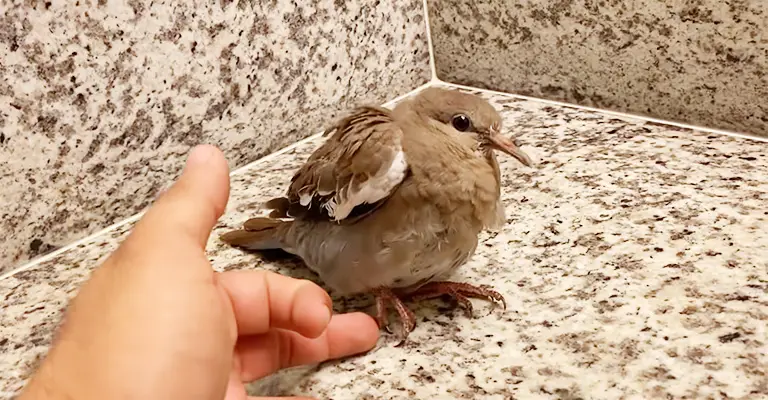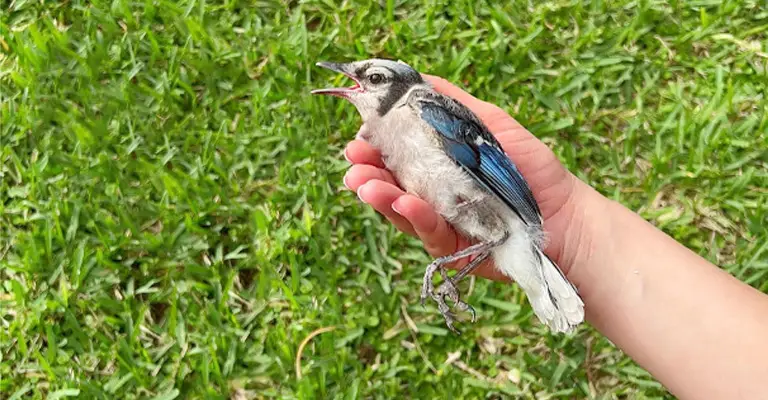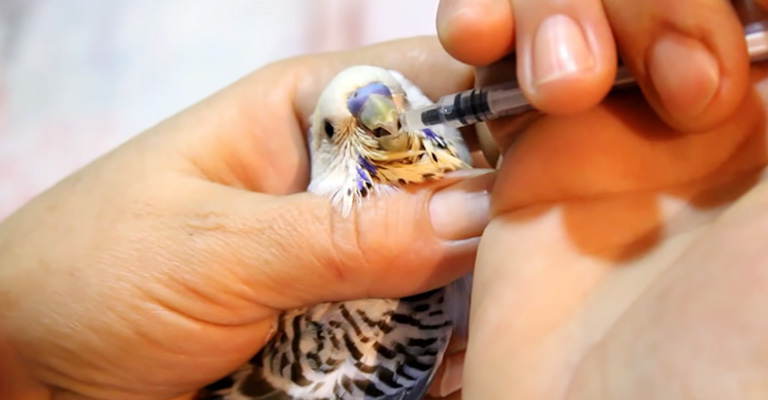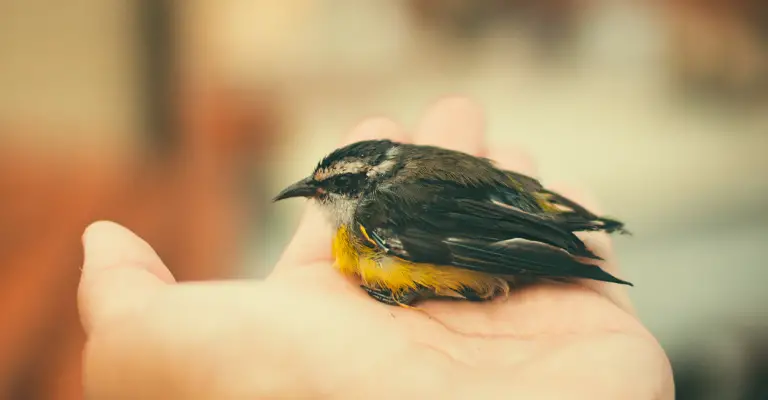Finding an injured bird can be stressful, especially if you have no idea how to treat them properly. Birds can get injured for a lot of reasons. They could get hit by a car or even fight with other birds.
Sometimes, the birds are just in shock; however, if they are injured, we must do good rather than harm. This post provides all the essential guidelines about what to do with an injured bird in my yard.

Characteristics of the injured bird :
Before you start treating the injured bird, especially if it’s wild. It should have one or more characteristics from below:
- It’s on the ground but is not moving
- When you approach the bird, it does not fly away
- You will not have to struggle while picking it up
- It has highly fluffed feathers
- Injurious are obvious (hanging wing, dangling leg)
- Trying to fly but cannot
What to Do With an Injured Bird in My Yard? : Adult bird

If you are still confused about what to do with an injury in my yard, then follow these simple steps below, and you will be good to go :
Evaluate the Situation of the Bird
The first and foremost step is to stay at a distance and monitor the bird for a few minutes. Ensure the bird is injured, not a young bird with weak flight muscles.
Moreover, if the bird can hop and fly low, it probably doesn’t need your help. If you have assessed the situation and the wild bird is injured, follow the next step to treat the birdie primarily.
Allow the Bird to Recover From Shock and Injury
Now that you have decided to help the wild bird, catch it and put it in the cardboard box. Cover the box with a lid or towel. Then, put the box in a cool, safe place.
Placing the box in a cool place allows the bird to recover from the shock’s injury. While handling the injured bird, use gloves to protect yourself from germs and disease.
Inform a Wildlife Rehabilitator

Make sure to check the bird periodically to make sure that you are getting better. By then, you can call the wildlife rehabilitator so the nurse can get the wild bird back to health.
Expert Suggestion :
Be cautious, and don’t try to force-feed the bird. If you are not an expert, you might further aggravate the situation. You can keep some water near the bird, around 3 to 4 drops.
So, if the bird is thirsty, it can drink the water. However, due to their weakness, birds can drown in shallow water, so avoid keeping excess water near the tray.
How to Catch an Injured Bird?
If you are determined that the adult bird needs to be rescued, then you can follow the instructions below:
- If the bird is in the mouth of a dog or cat or the fence, Release the bird as fast as possible but carefully. Maintain your grip on the bird so that you can treat the bird and its injuries.
- If the bird on the ground cannot fly, Go near it from behind quietly and slowly, then reach down quickly and pick it up. Pick the bird up while putting your hand around its shoulder. If you cannot pick the bird up in the daytime, try again at night or in the evening when it’s almost dark.
- If the bird can run, walk, hop, Maneuver, and try to put the bird in the corner, it will help you pick it up quickly. But if you find it hard, ask two or more people to help you. Or you can use a bird net.
- The bird can fly a little. You may be able to catch it after dark or by maneuvering it into a corner. Again, a bird net may help. If the bird can fly well, you may be able to catch her the next day, when she may be weaker from her injuries.
- The bird is flying well but has an injury you can see: Catching the bird may not be possible. Please do not get into a situation in which you are chasing the bird with no possibility of catching him. That will accomplish nothing, and the bird may die of stress.
Legal Considerations for Helping Wild Birds

It is illegal to catch any adult wild bird who is not injured. If you find a bird, it’s wise to take it to a licensed wildlife rehabilitator. This could avoid any legal issues.
How to Transport the Bird to the Wildlife Rehabilitator
Transporting sick or injured birds to a wildlife rehabilitator requires special care. The ideal goal is to transport the bird as soon as possible, ideally within an hour. To transport the bird safely and with comfort, you should follow some steps :
- Use a small, sturdy cardboard box or pet carrier to transport the bird. Ensure the cardboard is large enough for the bird to move around but not too big to fly or jump around.
- You can line the box with clothes, towels, or straws for cushioning.
- Carefully place the bird in the box, ensuring it is flat and not crumpled or twisted.
- Cover the box with a lid or towel and keep the bird calm.
- Maintain the box’s temperature within 85 to 90 degrees. A too-hot or too-cold temperature could further distress the bird.
- Place the box in the car’s back seat, and don’t let young children hold or sit near it. They may be unable to keep the box at the correct level and may not be steady enough to keep it to avoid re-injuring the bird.
- You can play soothing music at low volume. Many downloadable music files are available to soothe the bird; however, avoid sudden stops, twists, or turns.
- Drive directly to the wildlife rehabilitators as quickly and safely as possible. Don’t waste time showing the bird to others or taking pictures; this could cause unnecessary stress and delay the treatment.
- If the bird seems to be stressed while being transported, contact the rehabilitator or local vet for urgent guidance.
- The rehabilitator may have a wildlife center or may be doing rehabilitation outside of his or her home. Don’t be alarmed by the latter. Many rehabilitators operate out of their homes and are just as qualified as those in wildlife centers.
- Be prepared to provide some information, such as your name, address, the time and exact location where you found the bird, and a description of the incident if you saw what happened to the bird. If you wish, ask the rehabilitator if you can call later to find out how the bird is doing.
What to Do With an Injured Bird in My Yard? : Wrapping Up
Saving the life of an injured bird is a good deed in itself. Once you have turned the bird over, the rehabilitator congratulates you on doing that. Because that’s the best you could do to help the little innocent bird live and be released back into the wild.